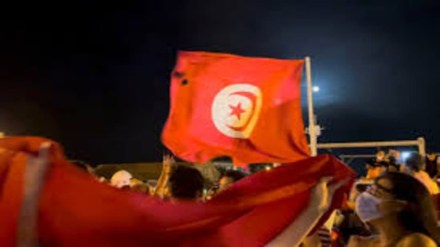By Dr Lakshmi Priya
On 8 December 2024, Damascus witnessed a culmination of the 13 years long instability and chaos induced by Arab Spring with the fall of the house of Assad that reigned Syria for over five decades. With a hope to begin the much-needed reconstruction and rehabilitation processes, Syrians were seen cheering and celebrating while the world watched with bated breath. The ouster of Bashar Al-Assad that had overcome the initial challenge by the opposition groups with the support of Iran, Hezbollah and Russia raises pertinent questions about the future of Syria.
The fact that Syria was gradually being accepted by the broader Arab world, projected a positive and stable picture for the Assad government, but the rebel offensive that began late in November 2024 and the swift capture of Aleppo on 30 November leading to the removal of Assad reflects that the discontent ran deep and the rebel groups like Hayat Al Tahrir Al Sham (HTS) were strong and waited for the opportune moment when Russia is engaged in Ukraine, Hezbollah is weakened and Iran is unable to provide adequate support.
Türkiye supported the rebel groups with an aim to marginalize Kurdish groups in Syria and enable the return of Syrian refugees, however in course it stamps its presence and significance in the region. Ankara not only demonstrated its importance in the fertile crescent but has also re-emphasized its capabilities and position as a regional middle power. On the other hand, Israel backed by the USA ensured the weakening of Hamas and Hezbollah in a strong and ongoing response to the October 7, 2023, attack and has ensured its dominant strategic position in the region.
When Russia supported the Syrian government in 2014 virtually saving the Assad rule, it was labelled as the beginning of Moscow’s re-assertion in the region, therefore fall of the Assad in 2024 marks the waning influence of Russia. Global community as well as the region will concede that the USA is the dominant power in the region and its influence is far from waning in the near future. In January 2025, when Donald Trump will return as the 47th President of America, he will certainly have more room to maneuver in the Middle East.
The fall of Assad also signifies a break in Iran’s ‘axis of resistance’ in the region. With weakened Hamas and Hezbollah, lack of possibility of sanctioned Iran joining JCPOA during Trump 2.0 and the rule of Assad coming to an end in Syria, the axis of resistance seems to have cracked if not broken completely. Also, the Gulf countries that had begun to look for alternatives by engaging with Russia in wake of the US withdrawal from the region, will now have to re-calibrate their policies in line with the changed dynamics.
The most important question is about the future of Syria with Assad no longer in power and despite the optimism in the air, the transition will be arduous. The rebel leader Abu Mohammed Al Golani has announced the establishment of transitional authority and Assad’s Prime Minister Mohammed Al Jalali is to oversee the transition of power, there is skepticism about the capability of HTS to rule along with fear of establishment of an radical Islamist rule under its leadership. Along with that the question of safety of the Alawite and other ethnic and religious minorities, including Christians, Druze and Kurds, remains important. Last thing Syria needs is replacing a secular government with an extremist one.
Lastly, the fall of Assad denotes the end of an era of leaders and families who came to power after revolutions, were loved and adored by the people, ruled with iron fist for decades, bred discontent, were abhorred and finally removed from thrones. The region is neither new to such phenomenon nor oblivious of it and will have certain repercussions in the future.
As the situation in Syria remains uncertain, serious question arises about peace and stability in the Middle East that has evaded the region since 2010-11. At this juncture, all regional and external actors have wished for a peaceful transition and hope that Syria does not implode like Libya, Iraq and Yemen. However, uncertainly looms and doubts remain on the future of Syria and Syrians.
India is monitoring the situation in Syria and has underlined the need for all parties to work towards preserving the unity, sovereignty and territorial integrity of Syria. It advocates a peaceful and inclusive Syrian-led political process respecting the interests and aspirations of all sections of Syrian society. It is also concerned about the safety and security of the Indian community in Syria and the Indian embassy in Damascus is in contact with the Indians. In wake of the crisis New Delhi had issued a travel advisory against Syria earlier.
Author is Research Fellow, West Asia, Indian Council of World Affairs, New Delhi.
Disclaimer: Views expressed are personal and do not reflect the official position or policy of FinancialExpress.com Reproducing this content without permission is prohibited.
